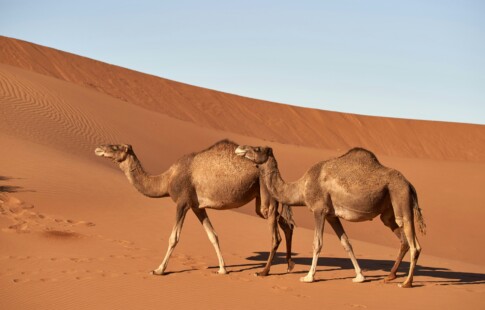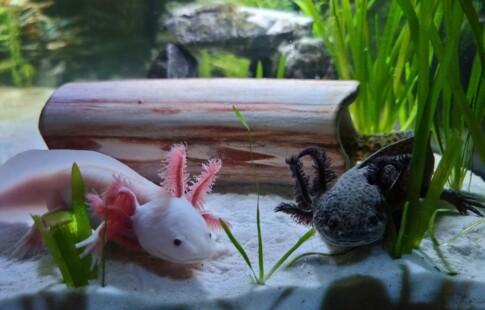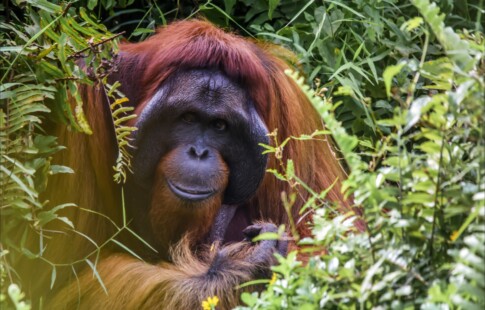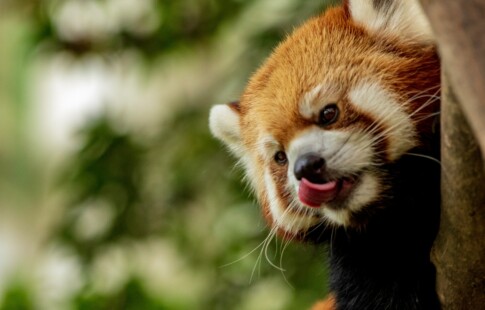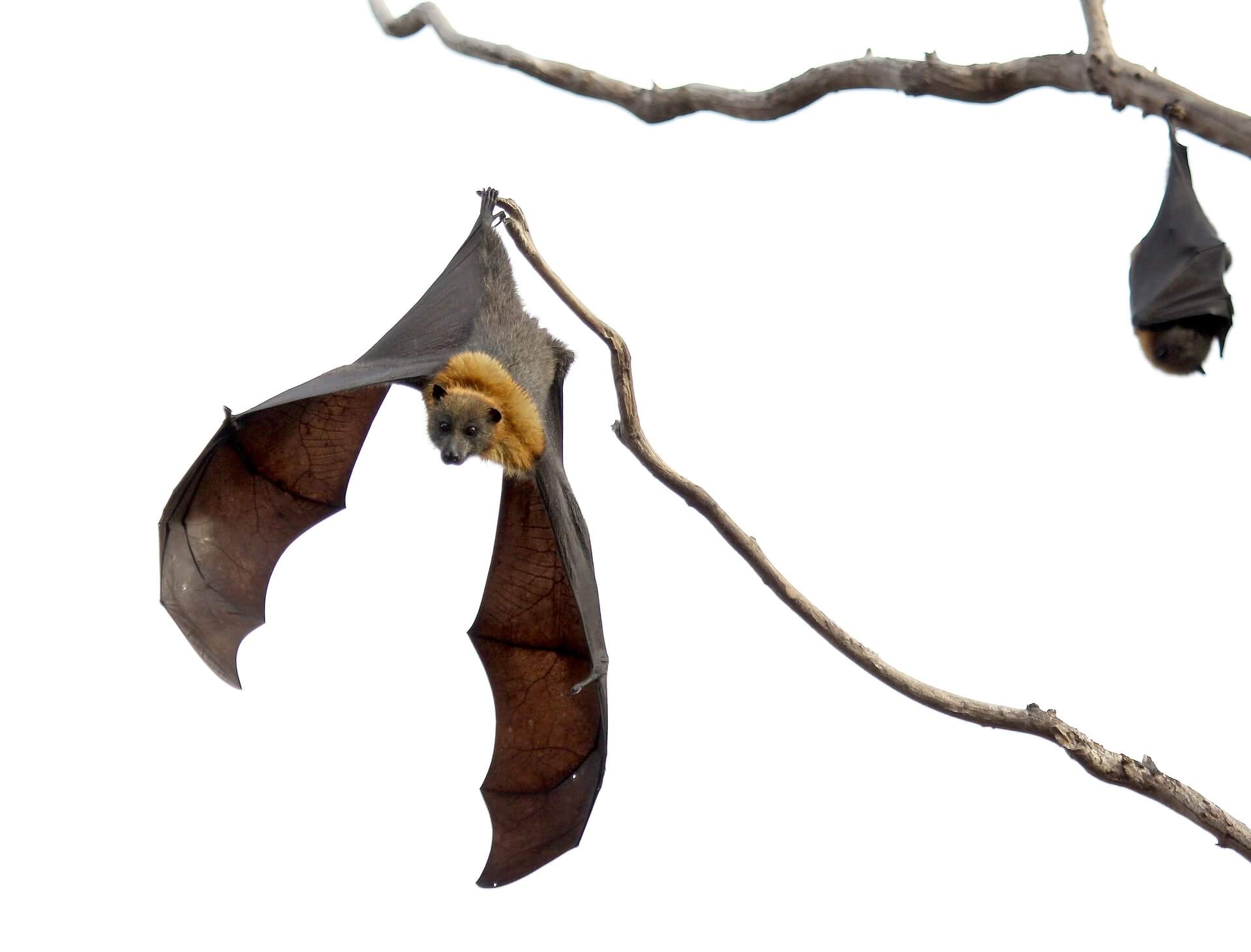
What Are Flying Foxes? Meet the World’s Largest Bats (Yes, Bats)
We are reader-supported. When you buy through links on our site, we may earn affiliate commission.
They glide through the night like shadows with wings, rustling the treetops and scattering pollen on the wind. With faces that resemble foxes and the grace of seasoned travelers, flying foxes are nature’s unsung gardeners — quietly shaping forests as they go.
Often misunderstood, these creatures play a role far bigger than their name suggests, weaving together the fates of ecosystems, farms, and even human health. But as their habitats shrink and myths persist, the future of flying foxes hangs in the balance.
Physical Traits and Navigation
Flying foxes are among the world’s largest bats, with wingspans up to 1.5 meters or about five feet, and body lengths around 40 centimetres or 16 inches. They have large eyes, pointed snouts, and ears that resemble those of a fox — hence their name, though they are not related to canines.
Unlike many other bats, flying foxes do not use echolocation. Instead, they navigate using their excellent eyesight and keen sense of smell. Their wings, formed from a thin membrane stretched over elongated finger bones, enable efficient flight over long distances.
Diet and Ecological Role
Flying foxes are primarily frugivorous, meaning they eat fruit. They also consume nectar, pollen, and flowers. This diet makes them vital pollinators and seed dispersers, particularly in tropical and subtropical forests. For instance, their digestion helps break down fruit seeds, enhancing germination rates in fig and other native trees. In Southeast Asia, they contribute to the pollination of commercially valuable crops such as durian.
Lifespan and Reproduction
These bats live long lives but have slow reproductive cycles. Females generally give birth to a single pup once per year. Pups cling to their mothers for weeks and rely on maternal care for an extended time. Because of their low birth rate, flying fox populations recover slowly after disturbances or loss.
Key Species to Know
Over 60 species of flying foxes exist, each with unique traits and conservation needs. While they all share similar roles in pollination and seed dispersal, some species stand out for their size, rarity, or successful conservation stories. Understanding these key species helps highlight both the beauty and urgency of protecting them.
The grey-headed flying fox of Australia is one of the largest species and is vital in forest regeneration, but it’s increasingly threatened by habitat loss and extreme heat. On the other end of the scale, the Mauritian flying fox has sparked debate due to government culling efforts despite its critical role in pollinating native trees. Then there’s the golden-crowned flying fox from the Philippines, known for its striking fur and massive wingspan — sadly, it is also endangered by hunting and deforestation.
These examples highlight the unique challenges each species faces and underscore why tailored conservation approaches matter.
Pressures Facing Flying Fox Populations
According to the International Union for Conservation of Nature, almost 50% of all flying fox species are facing population decline. Many are now considered vulnerable, endangered, or even extinct, underscoring the urgent need for conservation. Some of the main threats include:
- Habitat destruction from deforestation and land development
- Hunting and poaching, both for bushmeat and traditional purposes
- Extreme heat events, particularly in Australia, which can result in mass fatalities
- Human-wildlife conflict, especially in agricultural and urban areas
In many areas, flying foxes are displaced from roosting sites due to noise, tree removal, or deliberate disturbance.
Conservation Efforts and Community Impact
Conservation strategies involve advanced tools, such as drone-mounted thermal cameras and weather radar, to track colonies. These help researchers study movement and population health without disturbance.
Education also plays a key role. On Pemba Island, local communities once dependent on hunting now lead protection efforts — demonstrating how awareness and engagement can drive positive change at the grassroots level. Understanding flying fox behavior is more than just an ecological concern. It carries direct implications for human health.
In Australia, for instance, forest fragmentation and urban sprawl have brought flying foxes closer to residential areas — contributing to the spread of the Hendra virus. The virus, which can transfer from bats to horses and then to humans, highlights how environmental degradation can directly affect public health. By conserving bat habitats and minimizing human-wildlife conflict, communities reduce the risk of future outbreaks while protecting critical pollinators.
The Policy and Ecosystem Connection
Flying foxes are considered keystone species, meaning their presence supports the balance and resilience of entire ecosystems. Their disappearance could trigger cascading impacts across forest habitats and agricultural economies. They benefit:
- Tropical forests by enabling natural regeneration
- Biodiversity by supporting interdependent species
- Agriculture through crop pollination and seed dispersal
Effective conservation policies include habitat protection, sustainable forest management, wildlife corridors, and climate adaptation measures. Countries with significant bat populations are increasingly exploring collaborative, community-based strategies that align local needs with environmental priorities.
Why Flying Foxes Deserve Protection
Flying foxes are extraordinary mammals that quietly uphold the health of forests, farmlands, and entire ecosystems. Their massive wingspans and keen senses allow them to travel great distances each night, connecting fragmented landscapes and maintaining plant populations through pollination and seed dispersal.
Remarkably, one flying fox can scatter up to 60,000 seeds in a single night, covering a range of approximately 50 kilometers. In doing so, they support the regeneration of native trees, strengthen plant diversity, and help sustain habitats that house countless other species.
Their ecological role is especially critical in tropical and subtropical regions — places that store the planet’s richest biodiversity and play a major part in mitigating climate change. Forests depend on pollinators like flying foxes to remain intact, and in turn, these forests absorb carbon, regulate rainfall, and provide food and medicine to millions of people.
Conserving flying foxes isn’t simply about saving a group of unusual-looking bats. It’s about preserving balance — between people and planet, between economy and ecology. With stronger protections, science-backed policies, and more inclusive community engagement, flying fox populations can recover and thrive.
For individuals committed to sustainable living, supporting flying fox conservation is a natural extension of that ethos. Whether by planting native fruiting trees, reducing light pollution near bat habitats, or backing conservation organizations, there are many small actions that collectively make a big impact.
Protecting the Forests’ Night Gardeners
Flying foxes are more than giant bats — they serve as essential gardeners of the night. Through pollination and seed dispersal, they help sustain forests that store carbon, stabilize soil, and provide food and shelter for a wide range of species. Their continued survival plays a vital role in maintaining the health and resilience of ecosystems across tropical and subtropical regions. Conservation efforts focused on flying foxes contribute not only to biodiversity preservation but also to the long-term balance of natural systems that support life on Earth.
Share on
Like what you read? Join other Environment.co readers!
Get the latest updates on our planet by subscribing to the Environment.co newsletter!
About the author

Steve Russell
Steve is the Managing Editor of Environment.co and regularly contributes articles related to wildlife, biodiversity, and recycling. His passions include wildlife photography and bird watching.
